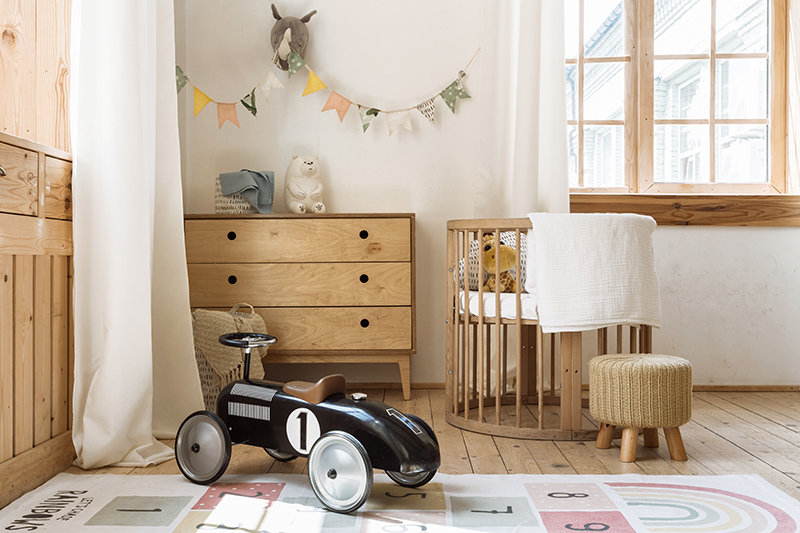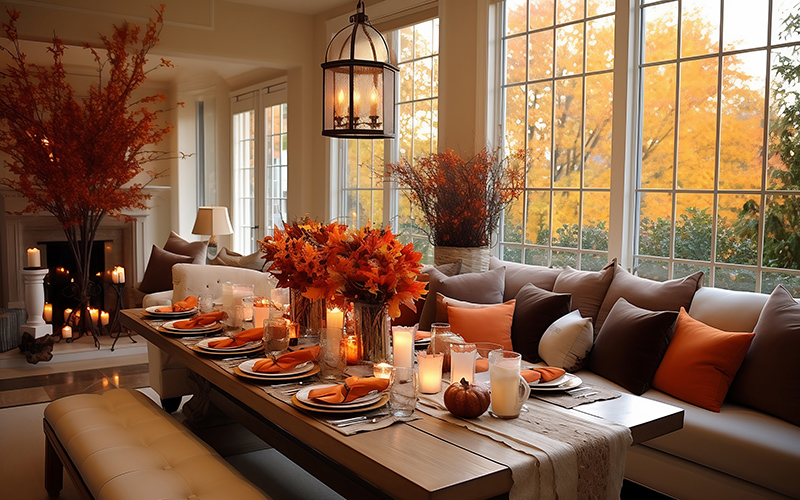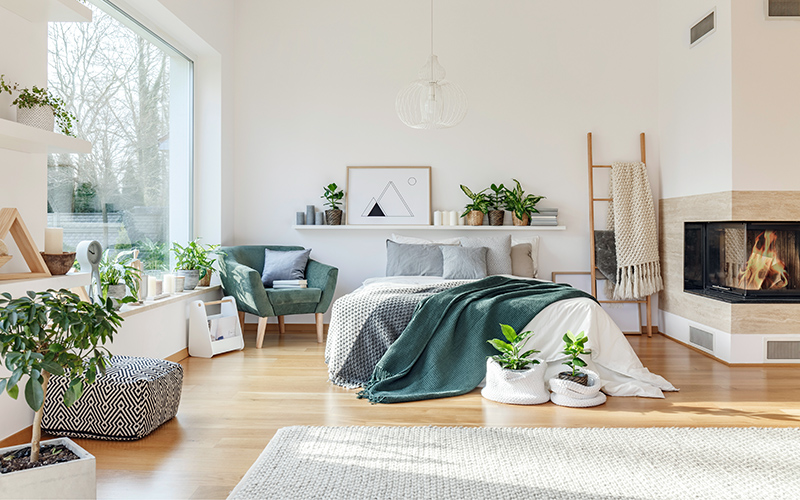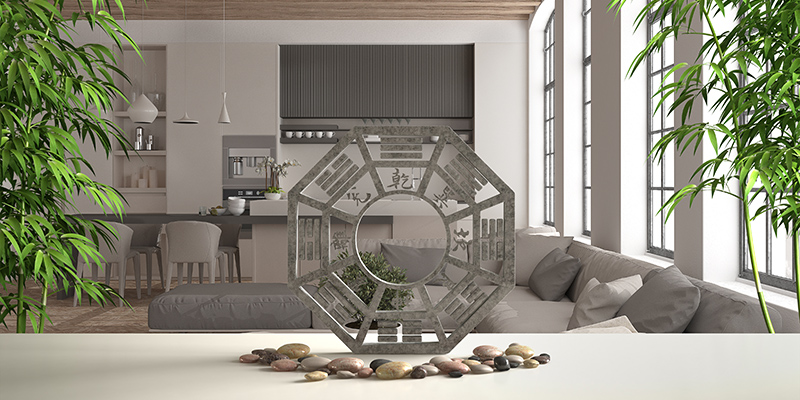Even though the idea of designing a nursery is sweet and dreamy, it can be hard to figure out how to make it a safe, comfortable, beautiful, and peaceful room for a baby. Don’t fret! We have come up with a few tips and a step-by-step guide that interior designers use to set up a nursery.
Step 1: Take Measurements

Before anything else, you need to take accurate measurements of the space you plan on using for your nursery. Start by taking a look at the space where the nursery will go. Is it close to where you sleep?
Think about the size of the room, how much natural light comes in, its shape, and essential furniture like built-ins, shelves, cribs, drawers, etc.
Just by knowing the size of the space, you can do a lot to set up a nursery you’ll adore.
Step 2: Choose a Theme
What you like to see in the nursery room plays an important role in the overall design. Consider following the guidelines below to set up a nursery theme.
- Choose a theme that you love and matches your own style, whether it’s modern, traditional, whimsical, or something else.
- Put together a mood board with pictures of vignettes, nurseries, and other lovely spaces that you like. This will help you make a perfect nursery setup.
- You can use Pinterest to make a fantastic mood board.
- Once you’ve put the mood board together, you’ll start to notice clear themes, like the same colors, styles, and patterns.
- With your mood board, now you can picture your dream nursery theme.
Step 3: Pick a Color Palette

After deciding on the theme, you’ll need to decide on the color palette to design a nursery. Color is a big part of making the space feel how you want it to. Here’s how to choose the right color palette:
- Choose colors that work with your theme and style.
- Make sure the colors feel right and balanced. Nursery Design Studio gives a complete guide to choosing the best nursery color palette.
- Pull inspiration from your mood board, as well as the items you plan on using in the nursery.
- Consider choosing a main color that you love for your nursery setup, and then mix in other colors to complete the palette.
Step 4: Select the Right Nursery Furniture

When you set up a nursery, you have to think about the furniture and how it will fit in the space. Here are some tips on choosing furniture for a nursery.
- Choose furniture that will last; pieces that can grow with your child, like a convertible crib set up for newborns, and dressers with changing tables.
- Pick furniture with a comfortable height; this will make it easier to reach and change diapers.
- Look for pieces that are sturdy, stable, and have safety features; safety is key when it comes to setting up a nursery.
- Measure the space where you plan on putting your furniture so you don’t end up with something that doesn’t fit.
- Choose furniture pieces with plenty of storage; you’ll need them for the many items you’ll have in the nursery.
Step 5: Decide on Window Treatments
Window treatments are a great way to set up a nursery and set the tone of the room. Think about what kind of window treatments would be best for the nursery. Below are some things you need to consider when deciding on your nursery’s window treatment:
- Safety: Make sure the blinds are safe for babies, stay away from tension rods, and pay attention to the right temperature for the nursery.
- Type: Blackout shades, blackout curtains, and roman shades are the most popular choices for nurseries as these provide the best coverage from sunlight.
- Style: Choose something that matches the room’s theme and color palette.
- Avoid cords: Little ones can strangle on blinds with long cords that are left out in the open, so choose blinds that are child-proof or go in a different direction.
- Heat-reflecting and UV-blocking window treatments: Blocking the sun keeps the baby’s room cool and well-circulated.
Stage 6: Choose Flooring

Floors get a lot of wear and tear, especially when your babies turn into toddlers. It is always a good idea to choose the right materal for your nursery. Below are the five common types of nursery flooring you can choose from:
Carpet
Adding a soft and comfortable carpet may protect your baby from bumps and bruises when he or she is learning to walk. Look for carpeting made from natural, VOC-free materials like wool, sisal, cotton, or jute.
This will keep your child from being exposed to chemicals found in cheaper, synthetic carpeting.
Be wary, though, as there are babies and kids who have allergies to dust and dirt that get stuck in carpets.
Wood
Hardwood floors last a long time and are easy to clean. They also have a classic look that never goes out of style.
Plan to buy a big area rug to protect your investment and make the floor a more safe and comfortable place for your baby to play on.
Bamboo
Bamboo doesn’t need dangerous pesticides to be cleaned because it is naturally resistant to pests. This makes it a completely organic product.
It is harder, more scratch-resistant, and less likely to warp than hardwood.
Also, the look and color of bamboo flooring can change greatly depending on how it is made, making it a good choice for any room.
Cork
Cork flooring is another great choice for nursery rooms because it is naturally resistant to allergens and germs. It is warmer and softer than wood flooring, making it a safe place for babies and toddlers.
It will cushion their falls and their steps, which is something you’ll appreciate more and more as your child grows.
Laminates
Laminates cost between $1 and $3 per square foot and are easy to put down. They can be used instead of hardwood or tile flooring.
Laminates are fairly durable, don’t get scratched easily, and are easy to clean. They are not a bad choice for a nursery or playroom as long as parents choose the newly available laminates with low or no emissions.
Step 7: Accessorize With Wall Decorations
Accessories are vital when you set up a nursery. Choose what you want to put in the nursery to make it look nice. Are you thinking about painting the walls of the nursery, or would you rather put up wallpaper?
Consider decorations like wall stickers and art prints that compliment the nursery’s theme or color palette.
Go back to your mood board to get inspiration.
Stage 8: Install Safety Features

Your nursery design won’t be complete without considering safety. It is important to install safety guards on all windows and furniture. This gives you peace of mind knowing that your baby is safe from any potential dangers.
- Set up a baby monitor so you can see and hear your little one from another room in the house.
- You may also want to set up a gate at the doorway so your child can’t wander off.
- Install outlet covers and cabinet locks to keep little fingers out of trouble.
- Add corner guards on tables or furniture with sharp edges.
- Add baby locks on cabinets and drawers so the kids cannot climb on them.
- Finally, set up smoke detectors and fire extinguishers in case of an emergency.
Stage 9: Lighting
Lighting should be a priority in the nursery. It makes the room look more inviting and cozy. Below are some tips on choosing the right lighting in your nursery.
- Consider using softer lighting fixtures like wall sconces, night lights, and table lamps for a cozy atmosphere.
- You can also set up dimmers to better control the light in the room.
Design Your Dream Nursery Like a Pro!
Each of these tips is important when designing a nursery, as it creates the perfect environment for your little one. From the flooring and walls to the safety features and lighting, ensure every detail is taken care of to create the perfect space for your new bundle of joy. With these steps, you can set up a nursery that is both safe and inviting. Have fun!
You Can Also Read These:
- How To Style Throw Pillows: What Are The Designer Rules?
- 11 Entryway Decor Ideas To Give Your Home A Warm Welcome
- 2023 Feng Shui Home Decoration And Arrangement Tips




